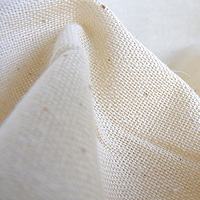Why Woven Polypropylene Bags are Suitable for Packaging
June 29, 2017

There have been great leaps and strides in packaging innovation over the last decade, and most of it is due to the ever-increasing number of revolutionary materials that have been created. Driven by the need to meet the on-going demand for affordable, durable, and long-lasting packaging and transport material, some types of packaging can be applied throughout various mediums of commerce, such as woven polypropylene bags.
As one of the most popular packaging materials of late, woven polypropylene bags are created to be a tougher and more resilient alternative to jute and hemp bags. It offers the same sort of lightweight and permeable features that make organic bags popular, with the additional benefit of being waterproof, easy-to-clean, and tear-proof.
Woven polypropylene bags are sourced from polypropylene fibres that are made into cordage, and then woven in the same manner as cloth fibres. This creates a highly resilient material that is twice as strong as cloth and is capable of bearing twice the weight, without tearing or straining. Because breathable bags are often used to transport organic goods such as produce or meat, there is a tendency for cloth bags to become dirty and prone to develop mold and fungus, and keeping them clean can be a chore.
On the other hand, woven polypropylene bags are easily washable and can be sanitised with the least amount of effort. Due to its polymer nature, this type of bag is also largely stain and water resistant, so organic matter cannot easily contaminate it, and it can be sanitised quickly after each use.
Just like jute and hemp cloth bags, woven polypropylene bags can be easily stowed away and will take up less weight than a collected bunch of cloth bags. Because it is slightly more ‘stretchy’ and resilient, it can likewise take on more ‘load’ than cloth bags, and one will need a lesser number of bags for packaging and transport than with cloth.
Furthermore, its polymer nature allows it to be sealed using heat, which makes it convenient for transporting goods that require a strong seal to prevent spillage, but demands just the right amount of breathability to prevent spoilage or damage.
These are the seasons why woven polypropylene bags are suitable for packaging:
- Lightweight
- Near tear-proof
- Easy to clean and sanitise
- Seals using heat
If you’re looking for a great source for all of your transportation and packaging needs, whether it’s organic cloth bags or polypropylene ones, visit Lowinsacks– your number one large-scale packing solutions supplier.
Optimized by NetwizardSEO.com.au
Posts 2018
Posts 2017
- How are Hessian Fabrics Produced?
- A Brief History of Hessian Fabric
- Benefits of Using Hessian Fabric for Christmas Decorations
- Fabric Painting Using Hessian Cloth
- Is Hessian Fabric Flammable?
- Polypropylene: What Makes This Plastic Sustainable?
- Cute Hessian Ribbon Ideas for Scrapbook Decorations
- Hessian Fabric for Your Home Window Treatments
- Why Jute Bags are Considered as Earth-Friendly
- Calico Drawstring Bags for Laundry Use
- Party Fun and Game Ideas Using Hessian Sacks
- Hessian Cloth and Lace Design Ideas for the Home
- Why Woven Polypropylene Bags are Suitable for Packaging
- Qualities of Woven Polypropylene Bags
- Differences between Woven Polypropylene and Hessian Sacks
- Versatile Uses of Hessian Sandbags
- Top 5 Reasons Why We Should Go for Sustainable Packaging and Get Rid of Plastic
- Different Ways of Designing Your Calico Bags
- Eco-Friendly Properties of Hessian Fabric
- Differences between Cotton and Jute Bags?
- How to Spot Superior Quality Hessian Cloth
- Why Is It Ideal for Vegetables and Fruit Produce to Be Inside Hessian Sacks Instead of Plastic?
- Clean and Green Packaging without the Plastic Materials
- Hessian Fabric for Upholstery
Posts 2016
- Various Handcrafted Products That Can Be Made From Hessian Fabric
- Why Should Supermarkets Use Recyclable Bags Instead of Plastic Bags?
- View all articles…